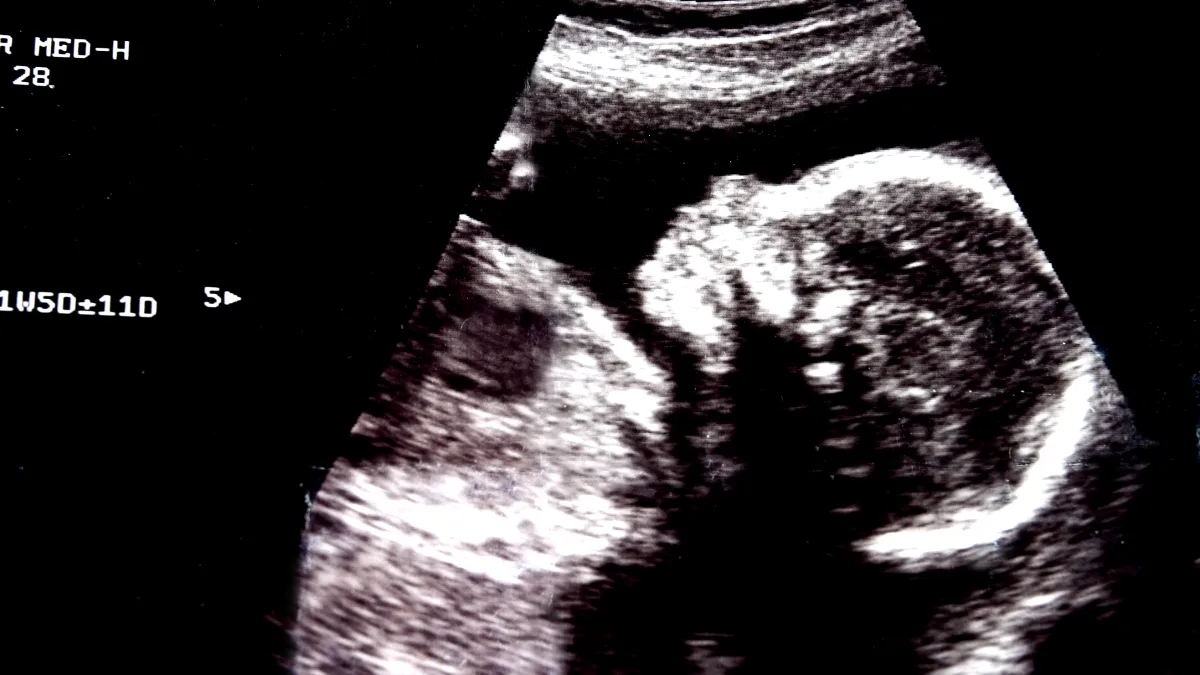It’s highly unlikely that the issue of whether to pursue closer bilateral relations with the countries of Central and Eastern Europe influenced too many voters during Taiwan’s presidential and legislative elections in January, won by William Lai and his ruling Democratic Progressive Party (DPP).
Polling suggests that the rising cost of living appears to have been the key concern of Taiwanese voters, who put Lai into the presidential office building in Taipei with just over 40 per cent of the vote, well below the 56 per cent won by his predecessor Tsai Ing-Wen in both 2016 and 2020. The DPP also saw its share of the vote fall—indeed, it no longer has an overall majority, a fact that will significantly complicate Lai’s ability to push forward his agenda.
In the run-up to the election, China—which continues to view Taiwan as its territory—denounced Lai as a dangerous separatist, set on continuing Tsai’s policy of championing a separate Taiwanese identity.
For Central and Eastern Europe, this policy has brought about a major shift in bilateral relations. During Tsai’s eight years in charge, Taiwan’s engagement with the countries of CEE transitioned from cautious interaction to more dynamic and mutually beneficial relations.
This evolution was emblematic of Taiwan’s broader diplomatic strategy, seeking to cultivate friendships based on shared interests and values. The Taiwan-EU Economic Dialogue, for instance—driven by some CEE governments—marked a significant milestone, offering a platform for both parties to explore collaborative ventures across various sectors, not the least of which is semiconductors. In 2022, Taiwan produced 64 per cent of the world’s microchips.
Last year, a Taiwan-backed venture capital firm, Taiwania Capital, annnounced that it is looking to invest 200 million US dollars in Central and Eastern Europe and to act as a bridge for start-ups that want to grow their businesses in Asia and beyond, as ties between the island and the region deepen.
“We understand that now we [Taiwan] are a middle power, and as a middle power, we want to take up the responsibility in working with … countries like Poland, and countries like Czechia, Slovakia, Romania and [the] Baltic states, to contribute, to bring good things to the region,” Mitch Yang, managing partner of Taiwania’s CEE Investment Fund, told Nikkei Asia in an interview.
Czechia, Estonia, and Slovakia have all sent high-level delegations to Tapiei over the past two years, while Lithuania has gone so far as to allow Taiwan to open a ‘representative office’—in effect an unofficial embassy—in Vilnius.
Karol Galek—a state secretary at Slovakia’s Ministry of Economy who led Bratislava’s delegation to Taipei said that, “Taiwan as a successful example that even a small player can become a global leader in research and development.”
Escaping the ‘middle income trap’
This historical trajectory reveals not only the growing ties but also the potential for deepening these relationships in a world increasingly defined by geopolitical contestations.
Both Taiwan and the countries of Central and Eastern Europe have large, powerful neighbours which covet (declared or otherwise) their territory and can point to a successful transition from dictatorship to democracy.
Taiwan also offers an economic model—last year the island was presented by the Vienna Institute for International Economic Studies (wiiw) as an example of how effective a well-designed strategic industrial policy can be in helping countries avoid the so-called ‘middle income trap’.
“Even though there are many differences with the EU members of Central and Eastern Europe the success stories of East Asia offer valuable inspiration,” said Zuzana Zavarská, an economist at wiiw and co-author of a new study on the topic.
Indeed, the economic interplay between Taiwan and the CEE region is ripe with potential. Taiwan’s robust manufacturing sector, particularly in electronics and precision machinery, complements CEE’s strategic initiatives to attract foreign direct investment and bolster technological capabilities.
Tsai’s New Southbound Policy, which Lai is likely to continue and which aims to strengthen Taiwan’s reputation as a secure and reliable partner amid the mounting threats of authoritarianism and climate change, as well as a global restructuring of supply chains, aligns well with CEE’s ambition to become a pivotal hub in Europe’s economic landscape.
As well as the planned investment by Taiwania Capital, concrete examples include Taiwanese investments in Poland’s electronics sector and Hungary’s automotive industry, showcasing the tangible benefits of economic collaboration.
Trade and investment synergies
Taiwan’s trade with the CEE region has seen a consistent uptick, driven by mutual interests in expanding market access and diversifying supply chains. In 2022, the EU as a whole was Taiwan’s fourth-largest trading partner, with Taiwan the EU’s twelfth-largest trading partner globally and fifth-largest in Asia, with total bilateral trade volume amounting to 75.30 billion US dollars, according to official Taiwanese statistics.
Taiwan’s expertise in high-tech industries, coupled with the CEE’s skilled workforce and strategic location, offers a compelling proposition for increasing trade volumes and investment flows. Enhancing bilateral trade agreements, reducing tariff barriers, and facilitating business exchanges could further unlock economic potential between Taiwan and the CEE countries.
Taiwan’s global leadership in semiconductors and information technology provides a solid foundation for collaboration with CEE nations keen on advancing their digital economies.
Joint research initiatives, technology parks, and start-up incubators could serve as catalysts for innovation, driving progress in key areas such as smart cities, green technologies, and digital health. An example of successful collaboration is the partnership between Taiwanese companies and Czech institutions in developing smart city solutions, underscoring the mutual benefits of technological cooperation.
Expanding research and development partnerships between Taiwanese universities and CEE academic institutions can also accelerate technological advancements and innovation. These collaborations can leverage Taiwan’s strengths in hardware manufacturing and CEE’s growing software development capabilities, fostering a complementary relationship that benefits both regions’ technological ecosystems.
Cultural and educational exchanges
The fabric of Taiwan-CEE relations is further enriched by cultural and educational exchanges. Taipei is already acting to increase its cultural presence in Europe by dedicated funding to selected European universities and associations in order to promote Taiwan Studies, as well as some scholarships for European academics and students to study in Taiwan.
Cultural festivals and art exchanges celebrate the diverse heritage of both regions, fostering a sense of community and shared humanity. These soft power initiatives are crucial in cementing long-term relationships that transcend economic and technological collaborations.
Taiwan’s proactive engagement with CEE countries reflects a strategic calculus aimed at diversifying its international partnerships amidst increasing global tensions. This approach not only seeks to strengthen Taiwan’s international position but also resonates with CEE countries’ desire for balanced foreign policies.
By championing shared values of democracy, human rights, and the rule of law, Taiwan can enhance its geopolitical standing while offering CEE countries an alternative to dependence on major powers—not least China.
Geopolitical complexities
Nevertheless, the geopolitical landscape presents challenges and opportunities for Taiwan-CEE relations. Taiwan must navigate the complexities of international diplomacy with finesse, advocating for peaceful resolution of cross-strait tensions while promoting its role as a responsible global actor. Engaging CEE countries in dialogues on cybersecurity, regional security, and economic resilience can solidify Taiwan’s position as a valuable partner in addressing contemporary challenges.
While the potential for Taiwan-CEE collaboration is immense, several challenges require strategic navigation. These include the delicate balance of diplomatic relations, and the need for a coherent strategy to counter economic coercion. When Lithuania allowed Taiwan to open its representative office, China blocked trade with Vilnius.
To overcome these challenges, Taiwan and CEE nations must prioritise innovation in diplomacy, economic collaboration, and cultural exchange. Establishing a formal Taiwan-CEE strategic dialogue mechanism could provide a regular platform for addressing issues of mutual concern and exploring new areas of cooperation.
Moreover, leveraging digital platforms to facilitate business matchmaking and cultural exchanges could enhance connectivity and understanding between the peoples of Taiwan and the CEE region.
Ultimately, however, by deepening economic ties, fostering technological innovation, and nurturing cultural and educational exchanges, Taiwan and CEE can build a partnership that not only benefits their own populations but also contributes to global stability and prosperity, and which counters China’s malign influence.
In navigating the challenges ahead, a strategic, innovative approach will be essential in realising the full potential of what has already proven to be a more than promising partnership.







